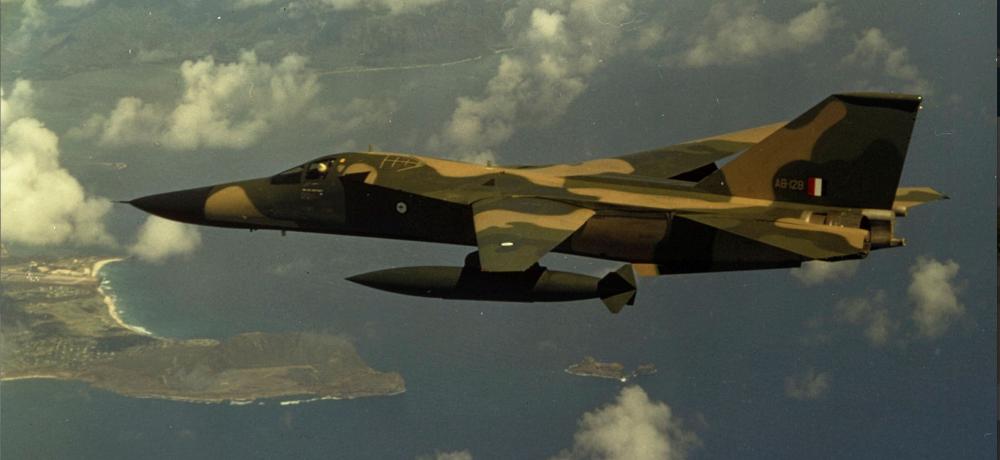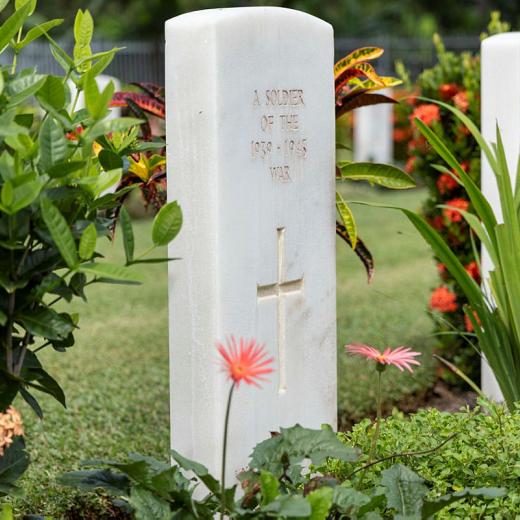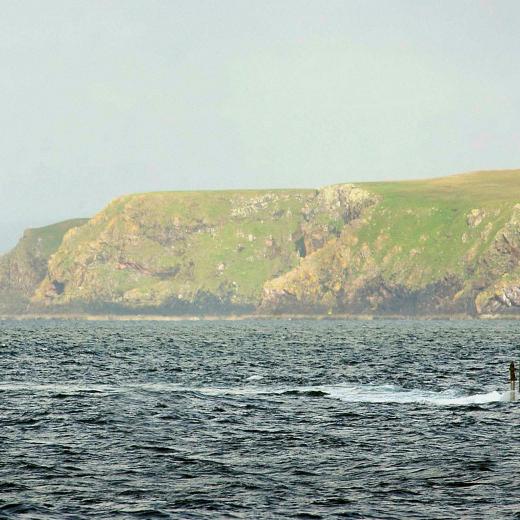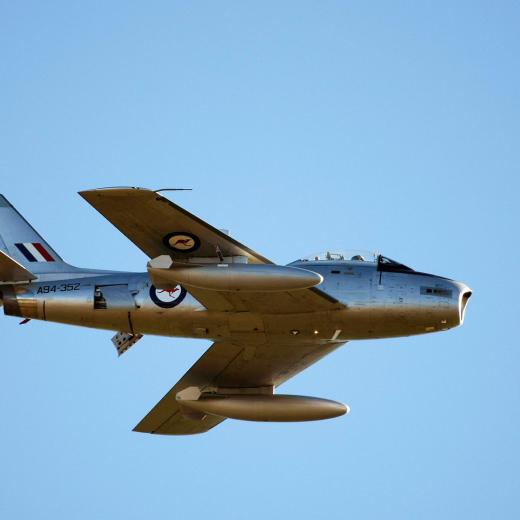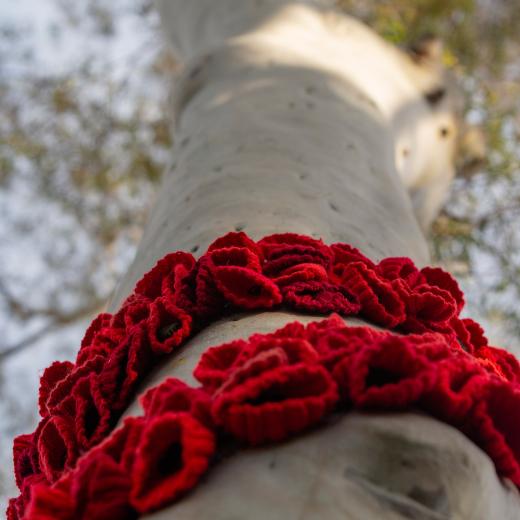BLUF
Formed in 1912, the Australian Flying Corps (AFC) played a pioneering role in military aviation during World War I. In 1921, it became an independent service the Royal Australian Air Force (RAAF), a transformation that signified the beginning of a new era. Since then, the RAAF has maintained a crucial role in defending Australia and contributing to international peacekeeping and security efforts.Summary
WORLD WAR I
Formation of the Australian Flying Corps (AFC)
- The AFC, the precursor to the RAAF, participated actively in WWI.
- Conducted reconnaissance, air combat, and supported ground forces.
- Played a crucial role in the Middle East, contributing to the British Empire's air efforts.
- The first AFC VC was awarded for gallantry to Lieutenant Frank Hubert McNamara, VC.
References
- The Australian Flying Corps | Australian War Memorial (awm.gov.au)
- Australian Flying Corps in World War I - Anzac Portal (dva.gov.au)
Battle of Hamel (4 July 1918)
- Demonstrated effective air-land integrated tactics.
- AFC supported the operation, showcasing precision and coordination.
- Marked a turning point in utilising aircraft for direct ground support.
- Enhanced the reputation of Australian forces in combined arms operations.
- Paved the way for future air support concepts in military operations.
References
- Battle of Hamel | Australian War Memorial (awm.gov.au)
- Royal Australian Air Force (RAAF) - Anzac Portal (dva.gov.au)
Formation of the Royal Australian Air Force (RAAF)
- The RAAF was established on March 31, 1921, evolving from the Australian Flying Corps (AFC) of World War I.
- It became the world's second independent air force after the RAF, marking Australia's early commitment to aerial defense.
- Initially, the RAAF inherited personnel, equipment, and bases from the AFC, laying the groundwork for its operations.
- The creation of the RAAF underscored the recognition of air power's importance in national defense strategy.
- The RAAF immediately focused on expansion and modernization, establishing training facilities and upgrading its fleet to prepare for future challenges.
References
- Royal Australian Air Force 100 Years | Australian War Memorial (awm.gov.au)
- Royal Australian Air Force (RAAF) - Anzac Portal (dva.gov.au)
INTERWAR PERIOD (1919-1939)
Attempts to build and develop the RAAF
- Initially equipped with outdated WWI fighters, Australia's air force expanded in the 1930s but remained unprepared.
- Interwar years saw Australia's military at its lowest, struggling with austerity and retrenchment, losing prior gains.
- RAAF struggled with obsolete aircraft and poor safety, failing to maintain readiness despite expansion attempts.
- Depression-era budget cuts devastated all services, reducing capabilities, personnel, and delaying modernisation efforts significantly.
- Late 1930s rearmament efforts boosted forces, but WWII found Australia's military still rebuilding from extensive deficiencies.
References
WORLD WAR II
Defence of Port Moresby and Jackson Airfield
- Critical to halting Japanese advancement towards Australia.
- RAAF units provided relentless air defence of the region.
- Jackson Airfield became a hub for Allied air operations.
- Symbolised the strategic significance of New Guinea in the Pacific War.
- Facilitated the turnaround in Allied fortunes in the Pacific theatre.
References
- Royal Australian Air Force 1941-1945 - Anzac Portal (dva.gov.au)
- Bomber Command - Anzac Portal (dva.gov.au)
- Resource Page: List of WW2 battles New Guinea & SW Pacific—1941 – 45. | The Runway (airforce.gov.au)
Battle of Britain (1940)
- Australians served in the RAF
- No direct RAAF involvement but highlighted individual valor of Australians.
- Australian members of the RAF played a part in the first major military campaign which was primarily an air campaign.
- Demonstrated the importance of air power in modern warfare.
- Contributed to preventing the German invasion of Britain.
References
- Battle of Britain | Australian War Memorial (awm.gov.au)
- Battle of Britain | History, Importance, & Facts | Britannica
- Battle of Britain | The Runway (airforce.gov.au)
Battle For Milne Bay
- Milne Bay marked the first decisive defeat of Japanese land forces by the Allies in the Pacific War.
- Australian Army's resilience and strategic tactics were crucial in repelling the Japanese ground assault.
- Superior intelligence allowed the Allies to deploy overwhelming force, inflicting a major defeat on the Japanese.
- RAAF played a pivotal role, providing relentless air support and disrupting enemy supply lines.
- RAAF's effective reconnaissance and bombing missions significantly weakened Japanese forces, ensuring victory.
- This victory underscored the effectiveness of combined arms tactics, significantly boosting Allied morale.
References
- Battle of Milne Bay | Australian War Memorial (awm.gov.au)
- Milne Bay 1942. The RAAF's Forgotten Finest Hour. | The Runway (airforce.gov.au)
- Milne Bay - Anzac Portal (dva.gov.au)
Battle of The Bismark Sea
- This strategic victory effectively halted Japanese reinforcement efforts to Lae, altering Pacific campaign dynamics.
- RAAF led decisive, coordinated air attacks, significantly decimating enemy convoy with precision.
- Invaluable support by Australian Navy and US forces, enhancing operational effectiveness and impact.
- RAAF's intensive bombing and strafing runs critically undermined enemy capabilities, ensuring victory.
- This battle marked a pivotal shift in the Pacific, significantly limiting Japanese territorial ambitions.
References
- Battle of the Bismarck Sea | The Runway (airforce.gov.au)
- Australians in the Battle of Bismarck Sea 2 to 4 March 1943 - Anzac Portal (dva.gov.au)
Bombing Campaign over Europe
- Participated as part of the RAF and in Australian squadrons.
- Engaged in strategic and tactical bombing operations over Nazi-occupied Europe.
- Demonstrated exceptional courage and skill in challenging conditions.
- Played a key role in disrupting German military and industrial capabilities.
- Some 10,000 Australians served with the Royal Air Force’s Bomber Command during WWII
- Served in the United Kingdom as part of the Allied offensive against the Germans
- 3,486 killed in action
- 650 died in training accidents
- Sustained Australia’s highest casualty rates in Second World War
- Note: Bomber Command | Department of Veterans' Affairs (dva.gov.au)
References
- RAF Bomber Command | Australian War Memorial (awm.gov.au)
- Bomber Command: History in Focus - Anzac Portal (dva.gov.au)
- Strategic bombing during World War II | Definition, Significance, Aircraft, Germany, & Japan | Britannica
- RAF Bomber Command | The Runway (airforce.gov.au)
POST-WORLD WAR II CONFLICTS
The Cold War 1947 - 1991
- The Cold War was a period of geopolitical tension between the Soviet Union and the United States, marked by ideological conflicts and military standoffs.
- During the Cold War, the RAAF played a key role in regional defence and strategic surveillance, aligning closely with US and NATO security objectives.
- The RAAF enhanced its capabilities through modernisation programs, acquiring jet fighters, bombers, and surveillance aircraft to meet the demands of the era.
- The F-111 acquisition in the late 1960s significantly boosted the RAAF's long-range strike capability, symbolising Australia's commitment to deterrence and defence.
- RAAF personnel participated in joint exercises and operations with allies, demonstrating interoperability and contributing to collective security efforts in the Asia-Pacific region.
- Post-Cold War, the RAAF shifted focus towards peacekeeping, humanitarian missions, and adapting to new security challenges in the evolving international landscape.
- The dissolution of the Soviet Union in 1991 marked the end of the Cold War era, leading to the emergence of 15 independent republics.
References
- What was the Cold War - Anzac Portal (dva.gov.au)
- Australia and the Cold War: 1949-1955 | Australian War Memorial (awm.gov.au)
Korean War (1950-1953)
- Provided vital air support in a multi-role capacity.
- Engaged in ground attack, air reconnaissance, and interdiction missions.
- Operated in challenging weather and terrain conditions.
- Showcased the RAAF's adaptability and resilience in combat.
- Strengthened Australia's commitment to United Nations efforts.
References
- Korean War | Combatants, Summary, Years, Map, Casualties, & Facts | Britannica
- Korean War, 1950-53 | Australian War Memorial (awm.gov.au)
- Out in the Cold: Australia's involvement in the Korean War - Korea and the Cold War | Australian War Memorial (awm.gov.au)
- Korean War 1950 to 1953 - Anzac Portal (dva.gov.au)
- Korean War | The Runway (airforce.gov.au)
Vietnam War (1962-1975)
- Involved in transport, medical evacuations, and bombing missions.
- Demonstrated versatility and adaptability in varied roles.
- Enhanced close air support tactics and helicopter operations.
- Contributed to multinational efforts alongside allies.
- Faced intense combat conditions, underscoring the human cost of war.
References
- Vietnam War | Facts, Summary, Years, Timeline, Casualties, Combatants, & Facts | Britannica
- Vietnam War 1962–75 | Australian War Memorial (awm.gov.au)
- Vietnam War 1962 to 1975 - Anzac Portal (dva.gov.au)
- Vietnam War | The Runway (airforce.gov.au)
Konfrontasi (Indonesia-Malaysia Confrontation 1963-1966)
- Supported Commonwealth efforts through surveillance and patrol missions.
- Involved in air transport and logistical support operations.
- Demonstrated strategic mobility and regional security commitment.
- Enhanced cooperation with British and Malaysian forces.
- Contributed to the stabilisation efforts in Southeast Asia.
References
- Indonesian Confrontation, 1963–66 | Australian War Memorial (awm.gov.au)
- Indonesia–Malaysia Confrontation (nlb.gov.sg)
- The Indonesian Confrontation 1962 to 1966 - Anzac Portal (dva.gov.au)
War on Terror Overview
- Post-9/11, Australia joined the US-led coalition in Afghanistan, invoking the ANZUS Treaty for support.
- The coalition ousted the Taliban in 2001, aiming to establish a democratic government in Afghanistan.
- Australia's military efforts included Special Forces and reconstruction tasks, focusing on Uruzgan Province development.
- Combat operations ended in 2014, with Afghan forces taking over; allegations of Australian war crimes emerged.
- The US-Taliban 2020 peace deal failed, leading to a Taliban resurgence and humanitarian crisis.
References
- Post 9/11, Afghanistan and Iraq | Australian War Memorial (awm.gov.au)
- White, Robert P (Major General US Army 'Coalition against ISIS') | Australian War Memorial (awm.gov.au)
Operations Okra (2014-2021) RAAF Focus
- Deployed fighter squadrons for airstrike operations.
- Conducted surveillance and refuelling missions in support of coalition forces.
- Demonstrated global security commitment and operational capability.
- Contributed significantly to the degradation of ISIS capabilities.
- Emphasised the importance of international collaboration in combating terrorism.
References
SIGNIFICANT FIGURES
Sir Richard Williams - "Father of the RAAF"
- Instrumental in the establishment and development of the RAAF.
- Advocated for air power and its independent role within the Australian Defence Force.
- Played a crucial role in strategic planning and organisational development.
- His leadership during the interwar period set the foundation for RAAF's WWII efforts.
-
Left a lasting legacy on Australian and international air power doctrine.
References
- Air Marshal Richard Williams | Australian War Memorial (awm.gov.au)
Lieutenant Frank Hubert McNamara, VC
- Awarded the VC for his actions on 20 March 1917 in Palestine.
- Despite being wounded, he landed his aircraft behind enemy lines to rescue a downed fellow pilot.
- Demonstrated exceptional bravery and determination under fire.
- His aircraft was damaged, and he managed to fly back to his base with both himself and the rescued pilot.
- McNamara's VC was the first to be awarded in Australian aviation history and remains a distinguished part of the Australian military legacy.
References
- Air Vice Marshal Francis Hubert (Frank) McNamara | Australian War Memorial (awm.gov.au)
- Francis Hubert McNamara - Anzac Portal (dva.gov.au)
HOME OF THE RAAF
- Foundational Site: Point Cook is the birthplace of the Royal Australian Air Force (RAAF), established in 1914, making it the oldest operating air force base in the world.
- Training Hub: Historically, it served as a central training institution for Australian military aviators, playing a crucial role in preparing aircrew for both World Wars.
- RAAF Museum: The base houses the RAAF Museum, which showcases Australia's military aviation history, including aircraft, memorabilia, and interactive displays.
- Heritage Significance: The site contains numerous heritage-listed buildings and landmarks, reflecting its longstanding military and aviation history.
- Ongoing Use: Despite its historical significance, Point Cook remains active for military training, ceremonial activities, and as a venue for air shows, preserving its legacy within the Australian Defence Force.
References
- Royal Australian Air Force 100 Years | Australian War Memorial (awm.gov.au)
- Royal Australian Air Force (RAAF) - Anzac Portal (dva.gov.au)

